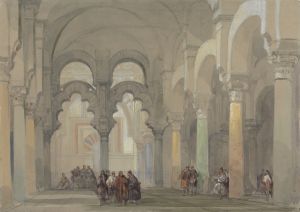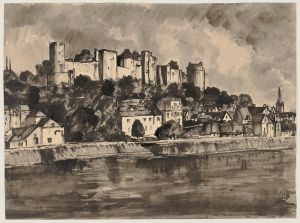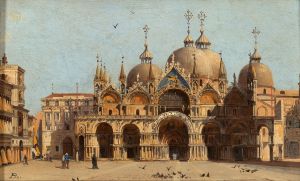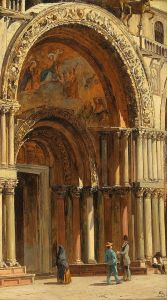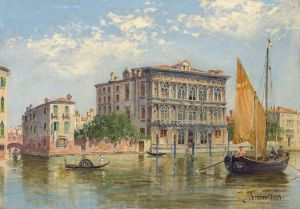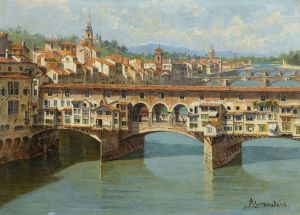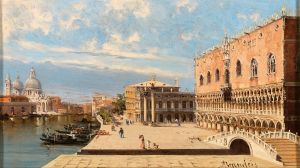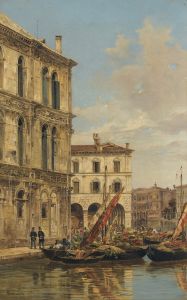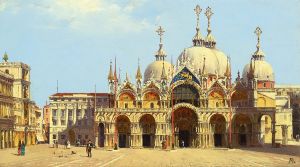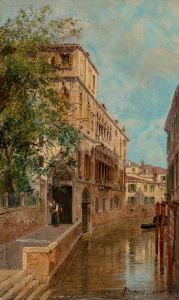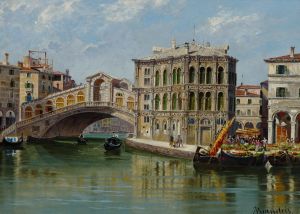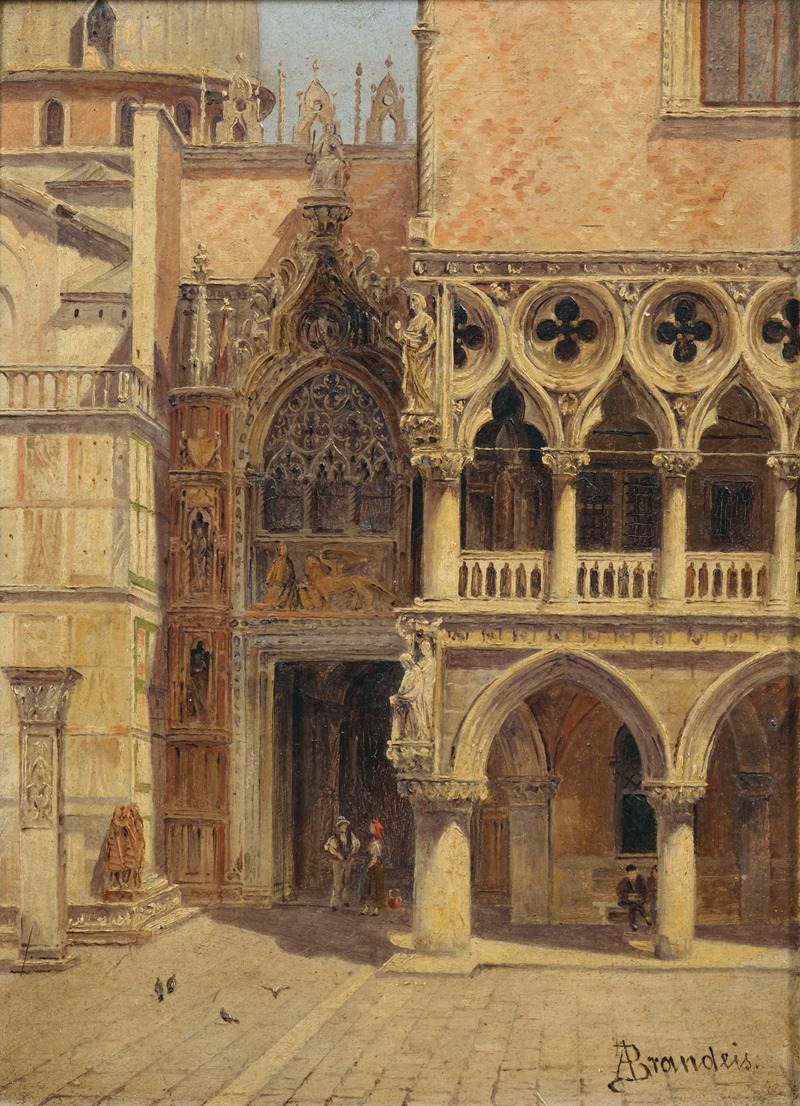
Venice, Porta della Carta, Palazzo Ducale
A hand-painted replica of Antonietta Brandeis’s masterpiece Venice, Porta della Carta, Palazzo Ducale, meticulously crafted by professional artists to capture the true essence of the original. Each piece is created with museum-quality canvas and rare mineral pigments, carefully painted by experienced artists with delicate brushstrokes and rich, layered colors to perfectly recreate the texture of the original artwork. Unlike machine-printed reproductions, this hand-painted version brings the painting to life, infused with the artist’s emotions and skill in every stroke. Whether for personal collection or home decoration, it instantly elevates the artistic atmosphere of any space.
Antonietta Brandeis was a notable 19th-century painter, renowned for her detailed and evocative landscapes and cityscapes, particularly those depicting Venice. One of her works, "Venice, Porta della Carta, Palazzo Ducale," captures the intricate beauty and historical significance of one of Venice's most iconic architectural features.
The Porta della Carta is a monumental gateway that serves as the entrance to the Doge's Palace (Palazzo Ducale) in Venice, Italy. This Gothic masterpiece was constructed between 1438 and 1442 by the architects Giovanni and Bartolomeo Bon. The Porta della Carta connects the Doge's Palace with the Basilica di San Marco, and it is celebrated for its elaborate decorations and sculptures, which include representations of the virtues and a statue of Doge Francesco Foscari kneeling before the Lion of Saint Mark, the symbol of Venice.
Brandeis, who was born in 1849 in Miskovice, Bohemia (now part of the Czech Republic), moved to Venice to study at the Accademia di Belle Arti. Her time in Venice had a profound impact on her artistic style and subject matter. She became particularly known for her vedute, a genre of highly detailed, usually large-scale paintings of cityscapes or vistas. Her works are characterized by their precision and attention to detail, capturing the unique atmosphere and architectural splendor of Venice.
In "Venice, Porta della Carta, Palazzo Ducale," Brandeis employs her meticulous technique to render the intricate details of the Porta della Carta. The painting likely showcases the ornate Gothic architecture, highlighting the delicate carvings and the interplay of light and shadow on the stone surfaces. Brandeis's use of color and light would have been instrumental in conveying the texture and depth of the scene, bringing the historical and cultural significance of the site to life.
Brandeis's paintings are appreciated for their ability to transport viewers to the locations she depicted, offering a glimpse into the past and preserving the beauty of Venice's architectural heritage. Her work is part of a broader tradition of vedute painting, which includes artists like Canaletto and Francesco Guardi, who also captured the essence of Venice in their art.
Throughout her career, Brandeis exhibited her work widely, gaining recognition in both Italy and abroad. Her paintings were well-received for their technical skill and the way they captured the spirit of the places she painted. Today, her works are held in various private collections and occasionally appear in art auctions, where they continue to be appreciated by collectors and art enthusiasts.
"Venice, Porta della Carta, Palazzo Ducale" exemplifies Brandeis's dedication to capturing the essence of Venice through her art. Her ability to depict the city's architectural wonders with such precision and beauty ensures that her work remains an important part of the artistic legacy of Venice.





